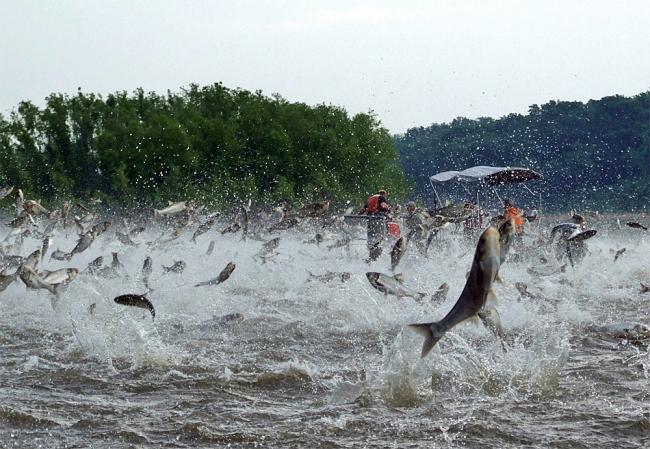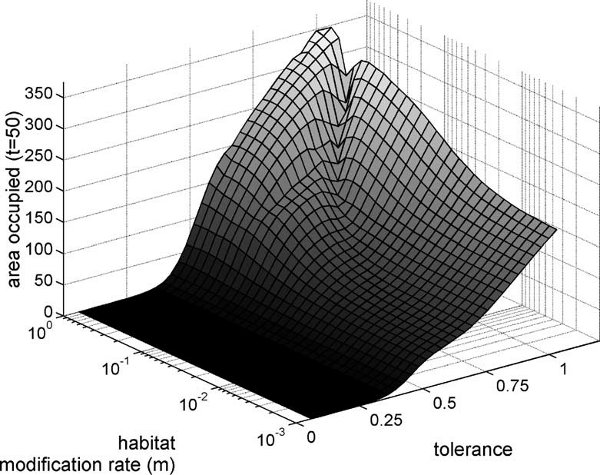Extinction and Invasion RiskLow NumbersIronically, species at risk of extinction and those at the beginning of an invasions share one particular characteristic - they are at very low population densities. Populations at low numbers can have very different dynamics from those at even slightly higher densities. Individuals may have more ready access to some resources (e.g. food, nest holes), but they might also encounter detrimental density-dependent effects, such as a restricted their ability to find mates (demographic Allee effect), or an inability to modify the environment in a beneficial manner. Some species have developed strategies to offset the negative impact of low numbers such as using specific mating sites that are easy to locate from a long distance (e.g., hill-topping in butterflies). We've predicted that a similar strategy may increase the probability of Asian carps successfully invading the Great Lakes. EngineeringSome species have large effects on abiotic conditions, such that they modify initially detrimental (or beneficial) conditions so that they increase (or decrease) population growth rates. Including the impacts of such habitat modification is essential when predicting invasion or extinction risk. For example, Spartina alterniflora, an invader on the west coast may increase its rate of invasion as population size increases, since the dense stand of stems reduces current speed, which when too fast, can rip stems from the substrate. See Ecosystem Engineering below. ClimateThe consistency of the environment can be a very strong factor in determining the persistence of a population. Weather patterns with large fluctuations can lead to events which cause rapid crashes in population size, thus increasing the probability of extinction. Environmental conditions that are more consistent may decrease extincition probability. Similarly, highly autocorrelated conditions could also increase invasion risks. We're testing this idea in the lab using the nematode C. elegans. See Climate below. |
  |
Publications
- Cuddington, K., Currie, W. and M. Koops. (submitted) Could an Asian carp population establish in the Great Lakes from a small introduction? Biological Invasions, 42 ms pages.
- Sobek-Swant, S., Kluzab, D., Cuddington, K., and B. Lyons. (2012) Potential distribution of emerald ash borer: What can we learn from ecological niche models using Maxent and GARP? Forest Ecology and Management 281:23-31.
- DeValpine, P., Cuddington, K., Hoopes, M., and J. Lockwood. (2008) Is spread of invasive species regulated? Using ecological theory to interpret statistical analysis. Ecology 89:2377-2383.
- Hastings, A., Cuddington, K., Dugaw, C., Elmendorf, S., Freestone, A. Harrison, S. Holland, M., Lambrinos, J. Malvadkar, R. Melbourne, B. Moore, K. Taylor, C., and D. Thomson. (2005) The spatial spread of invasions: new developments in theory and evidence. Ecology Letters 8:91-101.
- Cuddington, K., and A. Hastings. (2004) Invasive engineers. Ecological Modelling 178: 335-347.
- Cuddington, K., and P. Yodzis. (1999) Black noise and population persistence. Proceedings of the Royal Society B 266: 969-973.